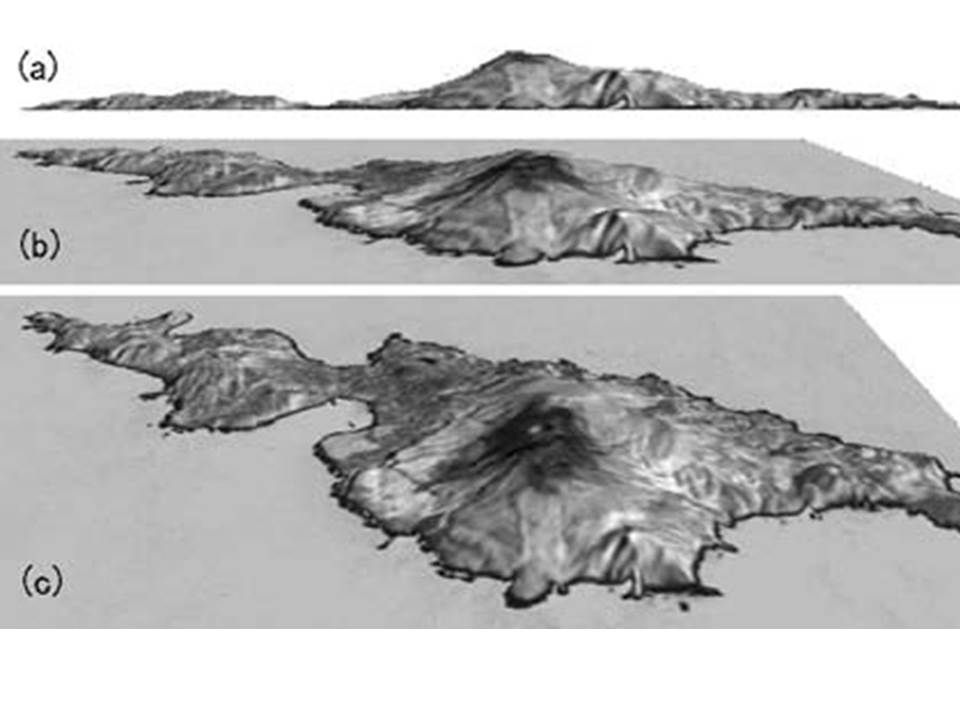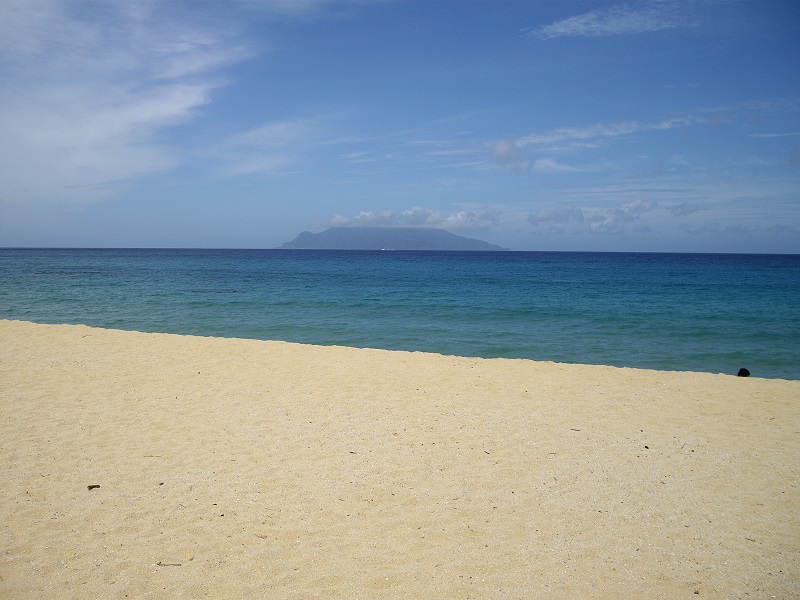travel guide of Kuchino-erabu island

Email:erabu.info@gmail.com
891-4208 Kuchinoerabu-jima, Yakushima-cho
891-4208 Kuchinoerabu-jima, Yakushima-cho
Geography
| Item |
Remarks |
| Position |
12 km to the west of Yakushima |
| Area |
35.8 square km |
| Coast extension (ambient) |
49.7 km |
| Population (January 2014) |
140 people |
| Population density |
4.2 people (per square kilometer) |
| Maximum altitude |
657 meters (Shin-dake) |
| Terrain |
Large undulating mountains |
| Main industry |
Fishing industry |
 Source:Prof. KINOSHITA Kisei
Source:Prof. KINOSHITA KiseiTopography and Vegetation of Volcanic Islands Studied by
By Prof. Kinoshita, the above images of Kuchinoerabu-jima has been published on his Internet site (Volcanic Island Kuchinoerabu-jima; -Near-Infrared and visible views-).
The Kuchinoerabu-jima is a small remote island(35.8 square km) near the coast of Japan's southern Kyushu island. It is located at the south of Kagoshima Prefecture, and about 12 km west of Yakushima.
 From Yakushima.
From Yakushima.You can see the Kuchinoerabu-jima from a beach of Yakushima.
With a major axis in the direction of the east-southeast from the west-northwest, it is a ground-shaped island.
The Kuchinoerabu-jima is the largest volcanic island in Satsunan Islands and Tokara Archipelago in Kagoshima prefecture, and it is believed to be an aggregate of 10 different volcanoes.

There currently is an active volcano on Kuchinoerabu-jima, but volcano's activity level is low. The highest point on the island is Mt. Shin-dake with a height of 657 meters, and only the low-land is a slight indentation of the coastline.
Most of the coast surrounding the island is a steep cliff.
The Island is covered with a laurel forest consisting of Sudajii (Castanopsis sieboldii Hats.) , Tabunoki (Persea thunbergii Kosterm.), Hisakaki (Eurya japonica Tunb.) , Gajumaru (Chinese Banyan, Ficus microcarpa L.f.), Akou (Banyan tree, Ficus superba Miq. var. japonica Corner) and Moku-tachibana (Ardijia sieboldii Miq.).
In 2007, the entire area of the island was designated as a national park.
Living on the island
| The population is 140 people (January 2014) . The clerk of the town hall branch has only one person stationed. There is no KOBAN (police office branch). An officer is not stationed. There is no fire department, but islanders have organized a fire brigade on their own. There is one post office (2 clerks and one part time clerk). It is also serve as a bank. There is one grocery store and one liquor store. There is no general store. There is one junior high school and one elementary school. This is a merger school. There are 10 elementary school students, 8 junior high school students, and 10 teachers . There is no industry and no big company. Islanders are engaged in agriculture and fishing. It is difficult for islanders to live with only one full-time job with only one island job, so many need second and third jobs. Because almost everyone works multiple job, the islanders lead a difficult life. However, both the young and old islanders are lively. |
90% of the population lives in Honmura village.
| Junior high school students in Erabu introduce about Erabu. Foods and drinks Deer is very delicious meat. It is little tough. I like Karaage the best of all cooked deer. Takenoko is very delicious. This grows in May. It is very useful. Mitake is made from Koganesenngann, a type of sweet potato. Koganesenngan is made by Kuchierabu locals.sake. Mitake is precious sake. June, 2014 By Takuma Sekiguchi Cultures I'll talk about Erabu's culture. I'll talk about school swimming at first. Usually students swim in the school's swimming pool. But our school doesn't have a pool. So we swim in the sea. The first time, we collect trash on the beach. It was enjoyable. Because the sea has waves. That time we got tanned. Next, I talk about excursions. We sometimes go no some excursions. For example, mountain, sea and so on. I think schools going to the mountain and sea as a school event are unusual. June, 2014 By Masatomo Nakao |
Shops and public facilities
| Facility |
Contents |
|
| Accommodation | 8 guest houses | No hotel and inn. |
| Restaurant | No restaurant | Be careful for lunch! |
| Shop |
grocery store, liquor store and gasoline SS No general store No super market or convenience store |
Only one liquor store. |
| Medical care | Clinic of the Municipal: One doctor One nurse |
|
| Bank | Japan Post Bank | No ATM |
| Post office | one (three clerks) | |
| Hot Springs | 4 sources | |
| Community center | Two centers Honmura and Yumugi have a community center, each. |
|
| Branch of the town hall | Yakushima-cho branch office staff: one person |
|
| School | School merger; one elementary school and one junior school dual classes |
|
| Power plant | Heavy oil power plant |
~300kw per hour |
| Business |
Calf breeding farm one Cargo transport company, 8 Guest houses |
Use of Land (1993)
| Classification | Hectare (ha) |
| Mountain Pine cedar Wilderness Pasture Agricultural land Other |
557 1403 744 650 150 300 |
| Total |
3804 |

Changes in the population (To date from the Meiji era)
Vertical axis: the population Horizontal axis: Christian Era
In the era (1960's) of high economic growth, a number of islanders had left the island. Currently, a slight decline continues.

With 138 inhabitants of March 2013, the proportion of those 65 and older was 39.9% (yellow, blue, and green).

Changes in the number of current students (blue) and graduates (red) in elementary school
Vertical axis: the number of elementary school students
Horizontal axis: Christian Era
Return to Top